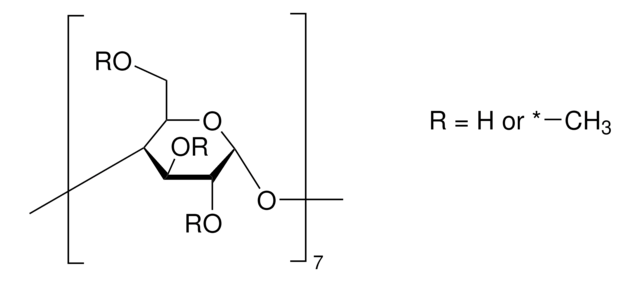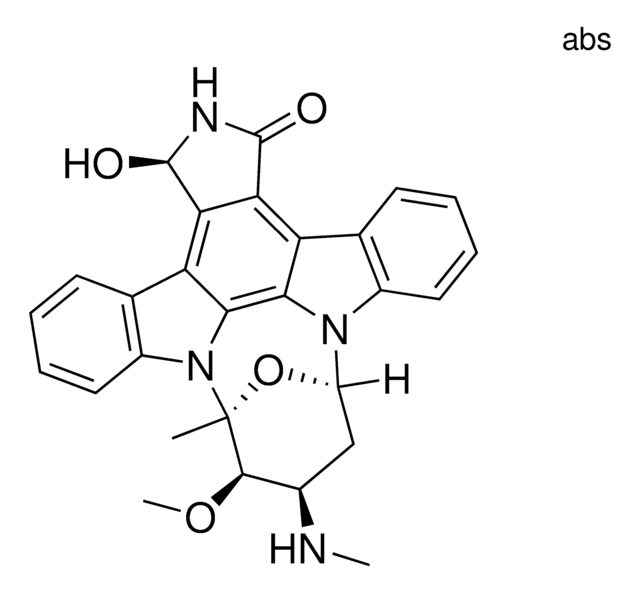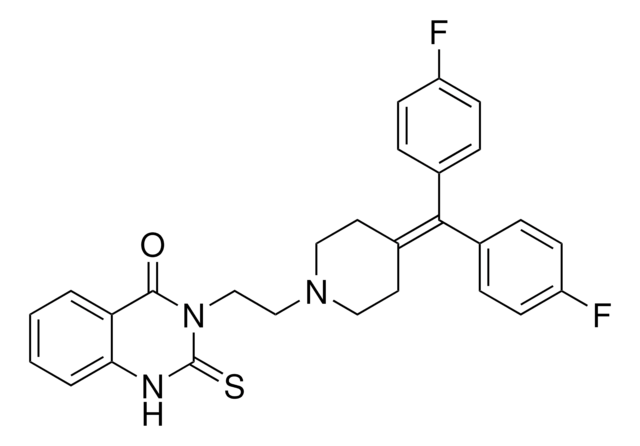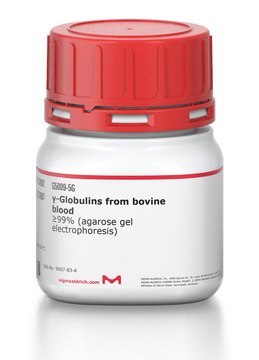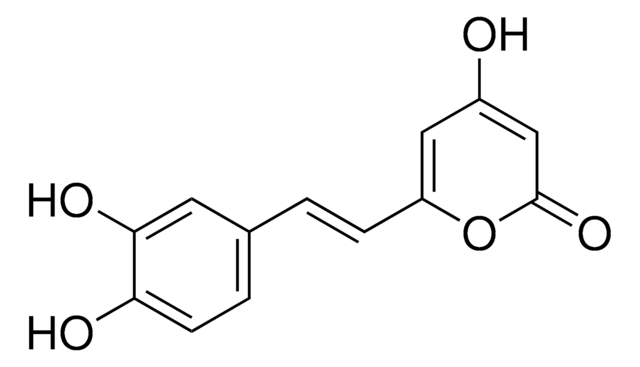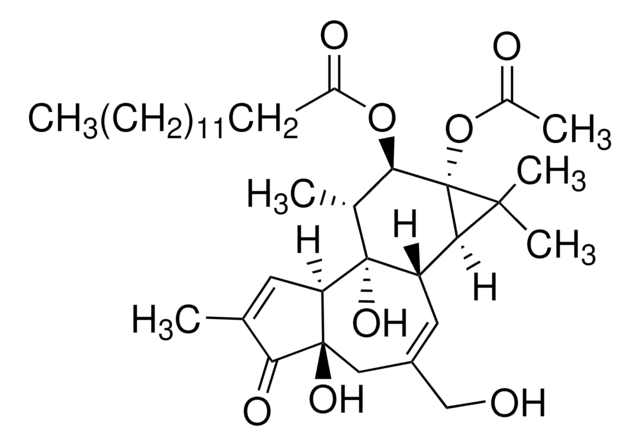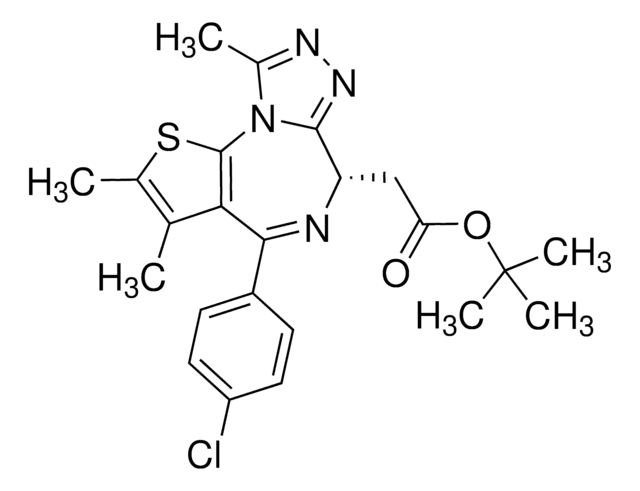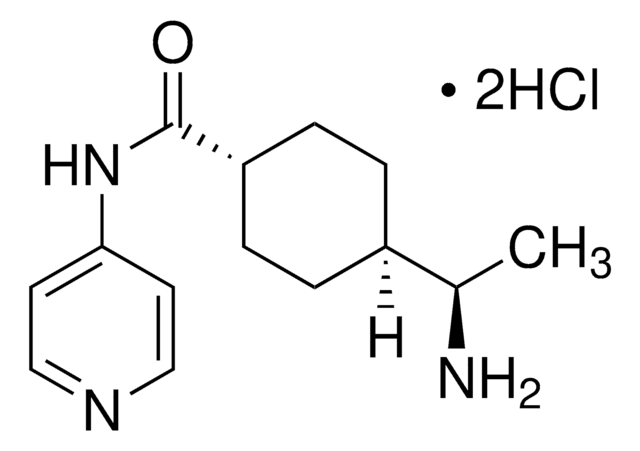616377
Toxin B, Clostridium difficile
A high molecular weight glucosyltransferase that inhibits small GTPases, such as Rho, Rac, and Cdc42, by glucosylation of a threonine residue.
Sign Into View Organizational & Contract Pricing
All Photos(1)
Synonym(s):
Cytotoxin
UNSPSC Code:
12352200
Recommended Products
Quality Level
form
lyophilized
manufacturer/tradename
Calbiochem®
availability
not available in, Canada
storage condition
do not freeze
solubility
sterile distilled water: soluble
storage temp.
2-8°C
General description
A high molecular weight glucosyltransferase that inhibits small GTPases, such as Rho, Rac, and Cdc42 by glucosylation of a threonine residue. This results in the shutdown of signal transduction cascades, leading to depolymerization of the cytoskeleton, gene transcription of a number of stress-activated protein kinases (SAPKs), and a decrease in the synthesis of phosphatidylinositol 4,5-bisphosphate. May also block serotonin release, and stimulate the production of phospholipases C and D. Due to its ability to affect depolymerization of the cytoskeleton, toxin B has been shown to inhibit biphasic muscle contraction. Unlike Exoenzyme C3 (Cat. No. 341208), this toxin does not require assistance to permeabilize cells.
A high molecular weight glucosyltransferase that inhibits small GTPases, such as Rho, Rac, and Cdc42, by glucosylation of a threonine residue.
A high molecular weight glucosyltransferase that inhibits small GTPases, such as Rho, Rac, and Cdc42, by glucosylation of a threonine residue. This results in the shutdown of signal transduction cascades, leading to depolymerization of the cytoskeleton, gene transcription of a number of stress-activated protein kinases (SAPKs), and a decrease in the synthesis of phosphatidylinositiol 4,5-bisphosphate. May also block serotonin release, and stimulate the production of phospholipases C and D. Due to its ability to affect depolymerization of the cytoskeleton, toxin B has been shown to inhibit biphasic muscle contraction. Unlike Exoenzyme C3 (Cat. No. 341208), this toxin does not require assistance to permeabilize cells.
Biochem/physiol Actions
Cytotoxic as determined in a cell rounding assay using human foreskin cells.
Primary Target
Small GTPases, such as Rho, Rac, and Cdc42
Small GTPases, such as Rho, Rac, and Cdc42
Product does not compete with ATP.
Warning
Toxicity: Irritant (B)
Physical form
Lyophilized from 50 mM Tris, 50 mM NaCl, 0.1% trehalose, pH 7.5.
Reconstitution
Following reconstitution, refrigerate (4°C). Stock solutions are stable for up to 2 weeks at 4°C. Toxin B activity will decrease after 2 weeks at 4°C following reconstitution.
Please see vial label for lot-specific reconstitution volume.
Analysis Note
major band at >200 kDa
Other Notes
Mackay, D.J. and Hall, A. 1998. J. Biol. Chem. 273, 20685.
Prepens, U., et al. 1996. J. Biol. Chem. 271, 7324.
Schmidt, M., et al. 1996. Eur. J. Biochem. 240, 707.
Wilkins, T.D. and Lyerly, D.M. 1996. Trends Microbiol. 4, 49.
Prepens, U., et al. 1996. J. Biol. Chem. 271, 7324.
Schmidt, M., et al. 1996. Eur. J. Biochem. 240, 707.
Wilkins, T.D. and Lyerly, D.M. 1996. Trends Microbiol. 4, 49.
Legal Information
CALBIOCHEM is a registered trademark of Merck KGaA, Darmstadt, Germany
Signal Word
Danger
Hazard Statements
Precautionary Statements
Hazard Classifications
Acute Tox. 2 Inhalation - Acute Tox. 2 Oral - Acute Tox. 3 Dermal
WGK
WGK 3
Regulatory Information
新产品
Certificates of Analysis (COA)
Search for Certificates of Analysis (COA) by entering the products Lot/Batch Number. Lot and Batch Numbers can be found on a product’s label following the words ‘Lot’ or ‘Batch’.
Already Own This Product?
Find documentation for the products that you have recently purchased in the Document Library.
Our team of scientists has experience in all areas of research including Life Science, Material Science, Chemical Synthesis, Chromatography, Analytical and many others.
Contact Technical Service
